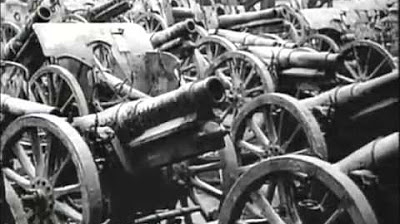The Failure of the League of Nations Framework
Summary
TLDRThe League of Nations, established in 1919 to prevent war, faced numerous challenges in the 1930s. With limited enforcement powers and a requirement for unanimous decisions, it struggled to respond effectively to international disputes. Key nations like the USA and Germany were absent, undermining its credibility. Isolationist sentiment in the USA, fearing involvement in European conflicts, led to its non-participation, leaving the League without the support it needed to maintain global peace.
Takeaways
- 🏛️ The League of Nations was established in 1919 after the Paris Peace Conference with the aim of maintaining world peace.
- 🌐 It was based in Geneva, Switzerland, and was designed to resolve international disputes through a collective approach.
- 🔍 Woodrow Wilson was a key proponent of the League, advocating for transparency in international diplomacy.
- ⚖️ The League had limited powers and could not enforce its decisions without the support of its member nations.
- 🛑 It could suggest measures like trade boycotts but lacked a military force to back up its rulings.
- 🕰️ The League's governing body, the Council, met infrequently and required unanimous decisions, hindering quick responses to crises.
- 🚫 Significant nations like Germany, the Soviet Union, and the USA either did not join or were not admitted, weakening the League's influence.
- 🇺🇸 The USA's non-participation was particularly detrimental, as its absence meant the League lacked global credibility.
- 🏴☠️ The League's inability to prevent the rise of militarism and aggression in the 1930s, such as Japan's invasion of Manchuria and Italy's invasion of Ethiopia, led to its failure.
- 📉 By 1935, the League's reputation was severely damaged, and by September 1939, the world was on the brink of another global conflict.
Q & A
What was the purpose of the League of Nations?
-The League of Nations was established in 1919 to maintain peace following the Paris Peace Conference after World War I.
Who was the main proponent of the League of Nations?
-Woodrow Wilson, the 28th President of the United States, was the visionary and idealistic figure who pushed for the creation of the League of Nations.
What was the intended function of the League of Nations in case of international disputes?
-In the event of an international dispute, countries could bring their case to the League, which would then judge what should be done.
What were some of the inherent weaknesses of the League of Nations?
-The League had limited powers to enforce its decisions, no standing army, and its governing body, the Council, required unanimous decisions and did not meet frequently, which hindered quick responses to crises.
Why was the United States not a member of the League of Nations?
-The U.S. did not join the League due to isolationist sentiments among Americans who wanted to avoid involvement in European wars, fearing that joining the League could lead to more conflicts.
How did the absence of the United States affect the credibility of the League of Nations?
-Without the United States, which was a major global power, the League lacked credibility and was seen as less effective in its mission to maintain peace.
What was the attitude of the Soviet Union towards the League of Nations, and when did it join?
-The Soviet Union was initially regarded with suspicion and was not admitted to the League until 1934.
Why was Germany initially not allowed to join the League of Nations?
-Germany was told to demonstrate that it was a peace-loving nation before it could apply for membership, due to its role in World War I.
What was the role of diplomacy in the vision of the League of Nations as proposed by Woodrow Wilson?
-Wilson believed in open and transparent diplomacy, stating that there should be no private international understandings and that diplomacy should always proceed frankly and in the public view.
What was the ultimate fate of the League of Nations by the late 1930s?
-By 1935, the League was discredited, and by September 1939, the world was once again at war, marking the failure of the League to maintain peace.
What was the significance of the League of Nations being based in Geneva, Switzerland?
-Switzerland was a neutral country, and basing the League in Geneva was intended to ensure impartiality and facilitate international cooperation.
Outlines

Cette section est réservée aux utilisateurs payants. Améliorez votre compte pour accéder à cette section.
Améliorer maintenantMindmap

Cette section est réservée aux utilisateurs payants. Améliorez votre compte pour accéder à cette section.
Améliorer maintenantKeywords

Cette section est réservée aux utilisateurs payants. Améliorez votre compte pour accéder à cette section.
Améliorer maintenantHighlights

Cette section est réservée aux utilisateurs payants. Améliorez votre compte pour accéder à cette section.
Améliorer maintenantTranscripts

Cette section est réservée aux utilisateurs payants. Améliorez votre compte pour accéder à cette section.
Améliorer maintenantVoir Plus de Vidéos Connexes

The League of Nations: An Ambition Out of Its League - International Relations Series | Academy ...

Why League of Nations Failed | The Outbreak of World War 2 | Flashback with Palki Sharma

The League of Nations

The League of Nations - the first 'world organisation'

Introduction to the United Nations | Global Politics

Sejarah Singkat Terbentuknya LBB || Organisasi Sebelum PBB
5.0 / 5 (0 votes)
